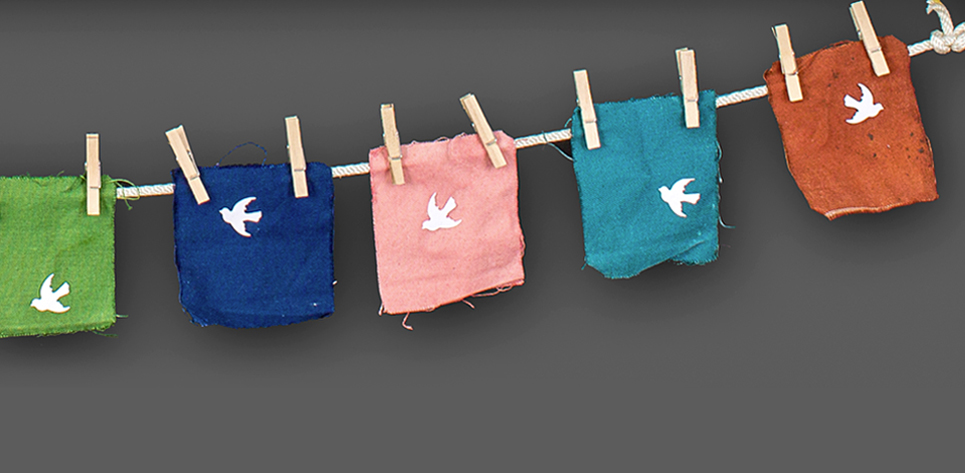My first move away from representational art began 6 years ago. I remember thinking, “ok, you spent years learning how to do this painting thing, now unlearn it and see what happens.” I let go of the boundaries of constructing a painting. Working with stencils freed me up from creating something specific. I bought spray paint, used rags, wipes and sponges. I worked on the floor, no more easels or brushes. I was suddenly quite free to do anything—no guru, no method, no teacher. Once I completed that body of work, “Meditations on the Hill Country,” I was completely unable to return to representational art. It was like hearing a loud slamming door.
So what came next? Lisl Steiner said, “don’t be possessed by your possessions.” Attachment to the impermanent nature of the universe causes suffering…give up the collections. Freed from both the collections and the specific meaning of the preciousness of the belongings and memorabilia of my past, I was now being released. The objects of design became my healing. Impermanence is part of all healing so every created thing must also pass away. And I was willing to let go.
I let go of the canvas as the traditional surface to receive paint. It became a base, but completely naked and obvious. Collections, collages, assemblages and narratives became my artistic journey. Art supplies and materials were transformed into objects, useful only for texture, pattern, repetition, color and construct. Using the artists’ objects was a nod to the traditional arts as I had learned and used in the past. Mandala pieces evolved as they were created. Unaware, my creating was a form of meditation based on the mandala practice, for “in the stillness you can hear the small voice.”
Working with mandalas, I learned, was a symbol of the entire creative process and a form of meditation. For me it was the process of letting go. I wasn’t just releasing my collections. I was releasing myself from the traditions of painting so I could move on, with a reference only to artist materials as motifs: the canvas, the pencil, the eraser—gone but not forgotten. Mandala work is not about drawing, it’s about focusing, calming yourself and centering. It is a sacred circle of life.
I let go without fear and with total acceptance and through this process, 21 mandala creations arose simultaneously. I seemed to derive an endless satisfaction from combining objects, textures, colors and shapes that worked harmoniously together. It was the experience of discovering the common, the uncommon, the useful, the useless and bringing them together to create a beautiful narrative. It wasn’t until a collage was finished that it unveiled itself to me as storied art, a narrative of lessons, wisdoms and insights only a lifetime can tell.
I used to work in a cubicle.
One day, I escaped.
I used to work on a white canvas square.
One day, I escaped.
I am willing to let go.
If we don’t change, we don’t grow. If we don’t grow, we are not really living life fully.
To close one door is to open another, therefore, to end is to begin.




